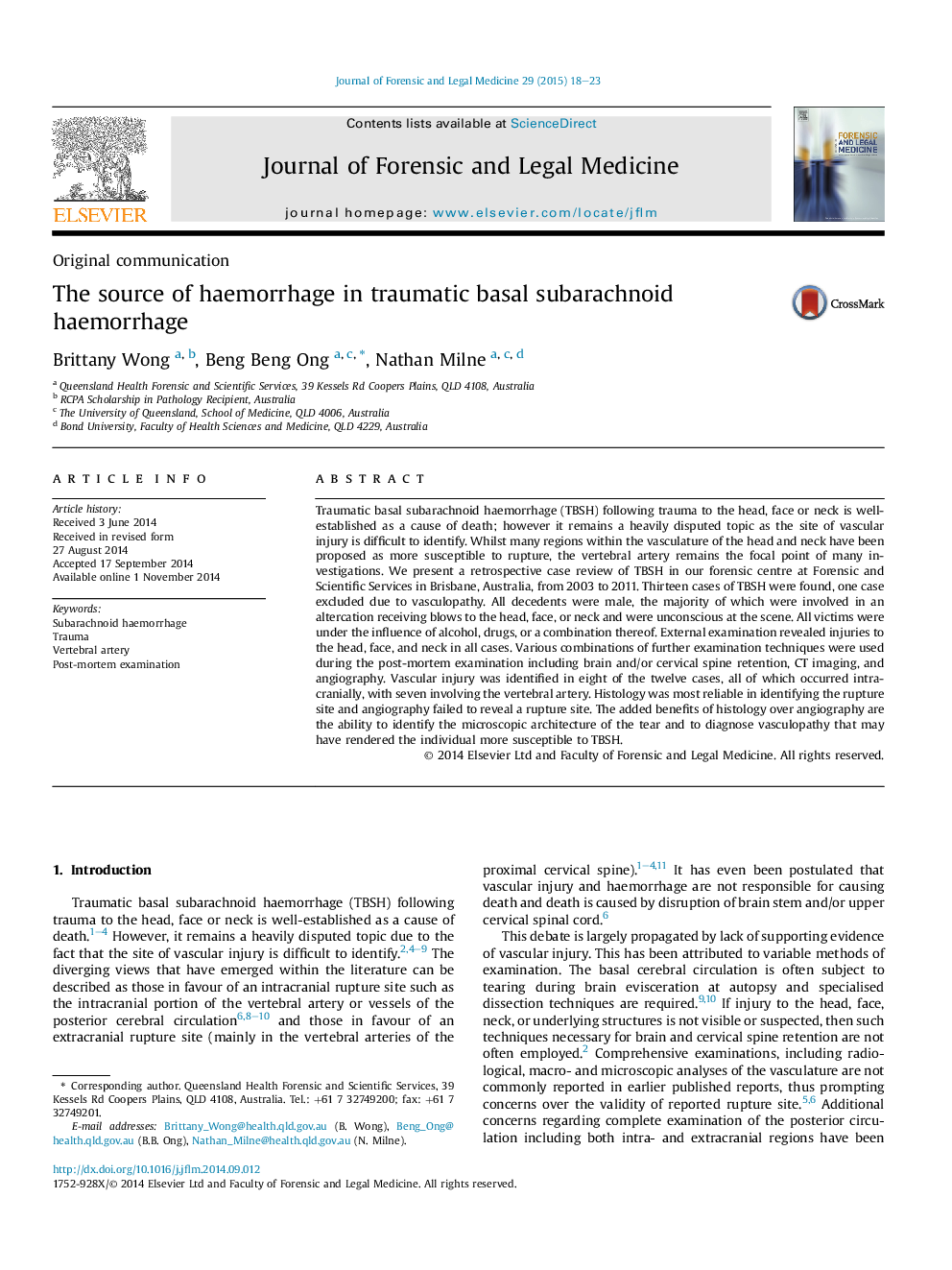| کد مقاله | کد نشریه | سال انتشار | مقاله انگلیسی | نسخه تمام متن |
|---|---|---|---|---|
| 101785 | 161293 | 2015 | 6 صفحه PDF | دانلود رایگان |
• The aim was to identify vascular rupture in traumatic subarachnoid haemorrhage.
• Different methods used in the 12 cases studied identified the rupture site in eight.
• All the sites of rupture were intracranial, seven involving the vertebral artery.
• In four of the eight cases, the rupture was only visualised with histology.
• It is recommended that histology is performed to locate the site of the rupture.
Traumatic basal subarachnoid haemorrhage (TBSH) following trauma to the head, face or neck is well-established as a cause of death; however it remains a heavily disputed topic as the site of vascular injury is difficult to identify. Whilst many regions within the vasculature of the head and neck have been proposed as more susceptible to rupture, the vertebral artery remains the focal point of many investigations. We present a retrospective case review of TBSH in our forensic centre at Forensic and Scientific Services in Brisbane, Australia, from 2003 to 2011. Thirteen cases of TBSH were found, one case excluded due to vasculopathy. All decedents were male, the majority of which were involved in an altercation receiving blows to the head, face, or neck and were unconscious at the scene. All victims were under the influence of alcohol, drugs, or a combination thereof. External examination revealed injuries to the head, face, and neck in all cases. Various combinations of further examination techniques were used during the post-mortem examination including brain and/or cervical spine retention, CT imaging, and angiography. Vascular injury was identified in eight of the twelve cases, all of which occurred intracranially, with seven involving the vertebral artery. Histology was most reliable in identifying the rupture site and angiography failed to reveal a rupture site. The added benefits of histology over angiography are the ability to identify the microscopic architecture of the tear and to diagnose vasculopathy that may have rendered the individual more susceptible to TBSH.
Journal: Journal of Forensic and Legal Medicine - Volume 29, January 2015, Pages 18–23
